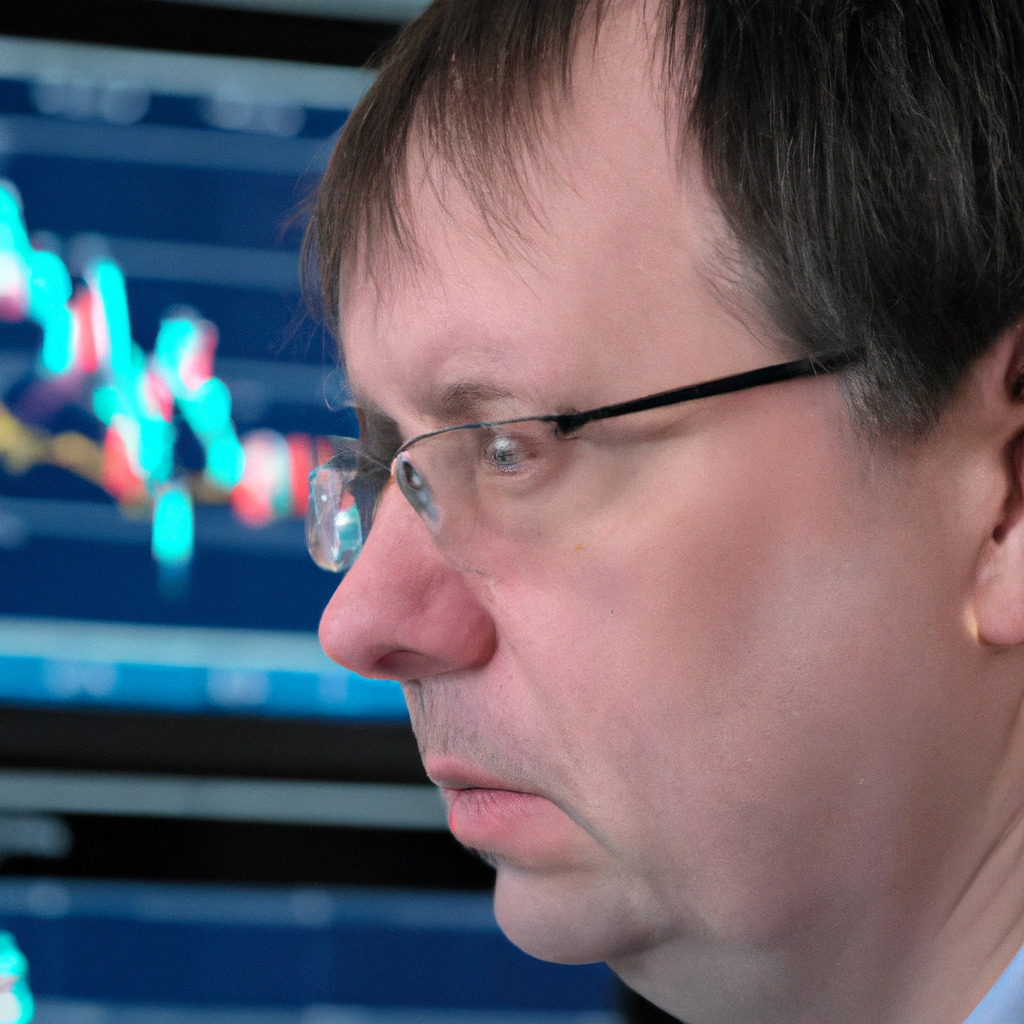Welcome to our beginner's guide to financial derivatives! In this article, we will be diving into the world of futures contracts and exploring the ins and outs of this popular investment tool. Whether you're a seasoned investor looking to expand your portfolio or a beginner just starting to dip your toes into the world of trading, this guide will provide you with a comprehensive overview of futures contracts and how they work. From understanding the basics of stock derivatives to exploring the benefits and risks of futures contracts, we will cover it all. We will also provide tips and strategies for beginners looking to get started with futures trading and help you navigate the differences between futures and options. Additionally, we will touch on advanced techniques in futures trading and discuss the future trends and innovations in the financial derivatives market. So, whether you're a novice or an experienced investor, get ready to delve into the exciting world of futures contracts and discover how they can enhance your investment portfolio.
1. An Introduction to Futures Contracts: A Beginner’s Guide to Financial Derivatives

An Introduction to Futures Contracts: A Beginner's Guide to Financial Derivatives
In the world of finance, futures contracts play a crucial role as one of the most popular and widely traded financial derivatives. For beginners who are just starting to explore the intricacies of the financial markets, understanding futures contracts is essential. This beginner's guide aims to provide a comprehensive overview of futures contracts, including their definition, purpose, and key features.
To begin with, a futures contract is a standardized agreement between two parties to buy or sell an asset at a predetermined price and date in the future. The underlying asset can vary widely, including commodities, currencies, bonds, and even stock market indices. These contracts are primarily traded on regulated exchanges, ensuring transparency and liquidity.
One of the primary purposes of futures contracts is to hedge against price volatility. For instance, a farmer may use futures contracts to lock in a price for their crops ahead of the harvest season, protecting themselves from potential losses due to fluctuating market prices. Similarly, investors and traders use futures contracts to speculate on the future price movements of various assets, aiming to profit from these fluctuations.
A crucial feature of futures contracts is their leverage. Unlike buying an asset outright, futures contracts require only a fraction of the total value of the contract as an initial margin. This allows traders to control a more significant position with a smaller capital outlay, potentially magnifying both gains and losses. It is important to note that futures trading involves a higher level of risk and may not be suitable for all investors.
Futures contracts also have an expiration date, known as the delivery or settlement date. On this date, the buyer of the contract is obligated to take delivery of the underlying asset, while the seller is obligated to deliver it. However, it is essential to understand that most futures contracts are not physically settled, meaning the actual asset rarely changes hands. Instead, they are typically closed out before the expiration date through an offsetting trade, resulting in a cash settlement.
In conclusion, futures contracts are a vital component of the financial derivatives market. Their purpose ranges from risk management and hedging to speculation and profit-making opportunities. As a beginner, it is crucial to understand the basics of futures contracts, including their definition, purpose, leverage, and expiration dates. With further knowledge and experience, individuals can delve into the fascinating world of futures and options stock derivatives and futures options trading.
2. Understanding the Basics of Futures Contracts: Exploring the World of Stock Derivatives

Futures contracts are a type of financial derivative that allows investors to speculate on the future price movement of an underlying asset, such as stocks, commodities, or currencies. This article aims to provide a beginner's guide to understanding the basics of futures contracts and exploring the world of stock derivatives.
A futures contract is an agreement between two parties to buy or sell an asset at a predetermined price on a specified future date. It serves as a standardized contract traded on regulated exchanges, ensuring transparency and minimizing counterparty risk. The underlying asset can be anything ranging from agricultural products like corn or wheat to financial instruments like stock market indices or individual company stocks.
One key characteristic of futures contracts is leverage. Investors can control a much larger position in the underlying asset by only putting up a fraction of the total value as margin. This amplifies potential profits but also increases the risk of losses. Therefore, it is crucial for beginners to fully understand the mechanics and risks associated with futures contracts before engaging in futures options trading.
Futures contracts have standardized terms, including the contract size, delivery months, and the minimum price fluctuation known as the tick size. This standardization allows for ease of trading and ensures liquidity in the market. The contract size represents the quantity of the underlying asset that is being traded. For example, one E-mini S&P 500 futures contract represents exposure to $50 times the value of the S&P 500 Index.
The delivery months indicate when the contract matures, and the final settlement takes place. Typically, futures contracts have multiple delivery months available, allowing investors to choose contracts with different expiration dates to suit their trading strategies.
To trade futures contracts, investors need to open a margin account with a brokerage firm that offers futures trading. They are required to deposit an initial margin, which is a fraction of the contract value, as collateral. The maintenance margin, a lower threshold, must also be maintained to avoid a margin call.
Futures contracts offer various trading strategies, including hedging and speculation. Hedgers, such as farmers or manufacturers, use futures contracts to protect themselves against adverse price movements in the underlying asset. Speculators, on the other hand, aim to profit from price fluctuations without any intention of owning the physical asset.
In conclusion, futures contracts are a type of financial derivative that allows investors to trade on the future price movement of an underlying asset. Understanding the basics of futures contracts is essential for beginners venturing into the world of stock derivatives. By grasping concepts like leverage, contract terms, and trading strategies, individuals can effectively navigate the futures options trading market.
3. How Futures Contracts Work: A Comprehensive Overview of Futures and Options Trading

Futures contracts are a type of financial derivative that allows investors to speculate on the future price movements of assets such as commodities, currencies, or stock indices. They are standardized agreements between two parties – the buyer and the seller – to buy or sell an underlying asset at a predetermined price and date in the future.
One of the key features of futures contracts is leverage, which enables traders to control a larger amount of assets with a smaller upfront investment. This makes them attractive to both individual investors and institutional traders looking to amplify their potential returns. However, it is important to note that leverage also increases the risk of losses.
To initiate a futures contract, both parties must deposit an initial margin, which acts as collateral and ensures that both sides fulfill their obligations. This margin is a fraction of the contract's total value and is typically set by the exchange. Additionally, traders must maintain a maintenance margin to cover potential losses incurred during the contract's duration.
Futures contracts are traded on specialized exchanges, such as the Chicago Mercantile Exchange (CME), where buyers and sellers can enter into contracts with ease. These exchanges provide a centralized marketplace that facilitates transparent and efficient trading.
There are two types of market participants in futures trading – hedgers and speculators. Hedgers use futures contracts to mitigate the risks associated with price fluctuations. For example, a farmer may enter into a futures contract to sell their crop at a predetermined price, protecting against potential price decreases. On the other hand, speculators aim to profit from price movements without any intention of taking physical delivery of the underlying asset.
Options contracts are another type of financial derivative closely related to futures contracts. Unlike futures contracts, options provide the right, but not the obligation, to buy or sell an underlying asset at a predetermined price within a specified timeframe. This flexibility allows options traders to customize their strategies based on their market outlook.
In summary, futures contracts are powerful financial instruments that offer traders the opportunity to speculate on price movements of various assets. They provide leverage, standardized terms, and a centralized marketplace, making them accessible to both beginners and experienced traders. By understanding the fundamentals of futures and options trading, investors can navigate these markets with confidence and make informed decisions to achieve their financial goals.
4. The Benefits and Risks of Futures Contracts: What Every Investor Should Know

Futures contracts are a type of financial derivative that allows investors to speculate on the future price of an asset and potentially profit from price fluctuations. This section will discuss the benefits and risks associated with futures contracts, providing valuable insights for beginner investors interested in futures and options stock derivatives.
One of the key benefits of futures contracts is their ability to provide leverage. Investors can control a large amount of an asset with a relatively small initial investment. This allows for potentially significant gains if the market moves in their favor. Additionally, futures contracts offer liquidity, meaning they can be easily bought and sold in the market.
Another advantage of futures contracts is their ability to help manage risk. By using futures contracts, investors can hedge against potential losses in the underlying asset. For example, if an investor owns a portfolio of stocks and is concerned about a market downturn, they can enter into a futures contract to sell those stocks at a predetermined price. This provides protection against potential losses in the stock market.
However, it's important to note that futures contracts also come with their fair share of risks. One significant risk is the potential for substantial losses. Due to the leverage involved, even a small adverse move in the market can result in significant losses for the investor. It is crucial to thoroughly understand the market and have a solid risk management strategy in place before engaging in futures options trading.
Another risk to consider is the volatility inherent in futures contracts. The prices of futures contracts can be highly volatile, influenced by various factors such as economic indicators, geopolitical events, and market sentiment. This volatility can result in rapid price swings and make it challenging to accurately predict market movements.
Additionally, futures contracts carry counterparty risk. This means that if the counterparty, usually a brokerage or clearinghouse, fails to meet its obligations, it can result in financial losses for the investor. It is essential to choose a reputable and well-regulated broker to mitigate this risk.
In conclusion, futures contracts offer several benefits for investors, including leverage, liquidity, and risk management capabilities. However, it is crucial to be aware of the associated risks, including potential losses, market volatility, and counterparty risk. As a beginner investor interested in futures and options stock derivatives, it is advisable to thoroughly educate oneself, seek guidance from experienced professionals, and develop a sound trading strategy to navigate the complexities of futures options trading successfully.
5. Getting Started with Futures Trading: Tips and Strategies for Beginners

Getting Started with Futures Trading: Tips and Strategies for Beginners
Futures trading can be an exciting and lucrative venture for those looking to participate in the financial markets. However, diving into futures trading without a solid understanding of the basics can be overwhelming. This section will provide beginners with some essential tips and strategies to help them get started in futures trading.
1. Educate Yourself about Financial Derivatives: Before delving into futures trading, it is crucial to have a solid understanding of financial derivatives. Futures contracts are a type of derivative instrument, which means their value is derived from an underlying asset. Take the time to learn about the different types of financial derivatives, including futures contracts, options, and stock derivatives. This knowledge will provide a strong foundation for your futures trading journey.
2. Learn the Basics of Futures Contracts: Familiarize yourself with the fundamentals of futures contracts. A futures contract is an agreement between two parties to buy or sell an asset at a predetermined price and future date. These contracts are standardized and traded on regulated exchanges. Understand the concept of contract specifications, including the underlying asset, contract size, delivery months, and tick size. This knowledge will help you navigate the futures market more effectively.
3. Start Small and Practice: As a beginner, it is advisable to start with a small trading account and gradually increase your position size as you gain experience and confidence. Consider opening a simulated trading account or paper trading to practice your strategies without risking real money. Simulated trading allows you to understand the dynamics of futures trading, test different strategies, and develop your skills without the fear of financial loss.
4. Develop a Trading Plan: A well-defined trading plan is essential for successful futures trading. Determine your trading objectives, risk tolerance, and preferred trading style. Set realistic profit targets and establish stop-loss levels to manage risk effectively. A trading plan will help you stay disciplined and avoid impulsive decisions based on emotions.
5. Utilize Technical Analysis: Technical analysis is a valuable tool in futures trading that involves analyzing historical price and volume data to forecast future price movements. Learn how to read price charts, identify trends, and recognize key chart patterns. Utilize technical indicators like moving averages, oscillators, and Fibonacci retracements to gain insights into market trends and potential entry and exit points.
6. Stay Informed and Follow Market News: Stay updated with the latest market news and economic events that can impact the futures market. News releases, economic indicators, and geopolitical developments can significantly influence the prices of underlying assets. Access reliable financial news sources and follow market experts to make informed trading decisions.
In conclusion, futures trading can offer substantial opportunities for beginners willing to put in the time and effort to learn. Educate yourself about financial derivatives, understand the basics of futures contracts, start small, develop a trading plan, utilize technical analysis, and stay informed about market news. With these tips and strategies, you can embark on your futures trading journey with confidence and increase your chances of success.
6. Exploring the Differences Between Futures and Options: Choosing the Right Derivative for You

When it comes to financial derivatives, two popular instruments that traders often encounter are futures and options contracts. Both futures and options serve as tools for managing risk and speculating on price movements in various financial markets. However, there are significant differences between these two derivatives that traders should understand before deciding which one suits their trading objectives and risk appetite.
A futures contract is a legally binding agreement between two parties to buy or sell an asset at a predetermined price and date in the future. This agreement obligates both parties to fulfill the terms of the contract, regardless of the current market conditions. Futures contracts are standardized and traded on organized exchanges, such as the Chicago Mercantile Exchange (CME). These contracts typically involve commodities like oil, gold, or wheat, as well as financial instruments like stock indices or currencies.
On the other hand, options contracts provide the holder with the right, but not the obligation, to buy or sell an asset at a specified price within a particular timeframe. Unlike futures contracts, options offer flexibility as they allow traders to choose whether or not to exercise the contract. Options can be traded on various exchanges, including both organized exchanges and over-the-counter markets.
Choosing between futures and options largely depends on the trader's objectives and risk tolerance. Futures are often favored by those seeking direct exposure to the underlying asset and are willing to accept the associated obligations and risks. They can be used for hedging purposes, allowing market participants to protect against adverse price movements or lock in future prices. Moreover, futures contracts provide the opportunity for leverage, meaning traders can control a larger position with a smaller amount of capital.
Options, on the other hand, offer more strategic possibilities. They provide traders with the ability to benefit from price movements without actually owning the underlying asset. Options can be used for various purposes, including hedging, speculation, or generating income through writing options. Additionally, options allow traders to limit their downside risk as the most they can lose is the premium paid for the contract.
In conclusion, understanding the differences between futures and options contracts is crucial for traders looking to venture into derivatives trading. While futures contracts offer direct exposure and potential leverage, options provide more flexibility and strategic opportunities. By assessing their trading objectives, risk appetite, and market conditions, traders can make an informed decision on whether futures or options are the right derivative for their needs.
Keywords: financial derivatives, futures contract, beginners guide, futures & options stock derivatives, futures options trading.
7. Advanced Techniques in Futures Trading: Taking Your Investments to the Next Level

For those who have mastered the basics of futures trading, there are advanced techniques that can take your investments to the next level. These techniques allow traders to maximize their profits and mitigate risks in the highly volatile futures market. In this section, we will explore some of these advanced techniques and how they can be applied in futures trading.
One advanced technique in futures trading is known as spread trading. This strategy involves simultaneously buying and selling two related futures contracts. Traders use spread trading to profit from the price difference between the two contracts, rather than relying solely on the direction of the market. For example, a trader may buy a futures contract for a particular commodity and sell a contract for a related commodity. By taking advantage of the price relationship between the two, the trader can generate profits regardless of whether the overall market is trending up or down.
Another advanced technique is called options trading. Options are financial derivatives that give traders the right, but not the obligation, to buy or sell a futures contract at a predetermined price within a specific timeframe. Traders use options to hedge their positions or speculate on the future price movement of the underlying asset. Options trading allows traders to profit from both rising and falling markets, offering greater flexibility and potential returns.
Additionally, futures traders can utilize technical analysis to make informed trading decisions. Technical analysis involves studying historical price and volume data to identify patterns and trends. By analyzing charts and indicators, traders can predict future price movements and make more accurate trading decisions. Technical analysis is particularly useful in futures trading, where prices can be influenced by a range of factors such as supply and demand, economic indicators, and geopolitical events.
Risk management is another crucial aspect of advanced futures trading techniques. Traders employ various risk management strategies, such as stop-loss orders and position sizing, to limit potential losses and protect their capital. Stop-loss orders automatically close out a position if the market moves against the trader beyond a specified level. Position sizing involves determining the appropriate amount of capital to allocate to each trade, taking into account risk tolerance and market conditions.
In conclusion, advanced techniques in futures trading, such as spread trading, options trading, technical analysis, and risk management strategies, can help traders take their investments to the next level. These techniques allow traders to profit from price differences, hedge their positions, analyze market trends, and manage risks effectively. However, it is essential for traders to have a solid understanding of these techniques and to continuously educate themselves in order to navigate the complex world of futures trading successfully.
8. The Future of Futures Contracts: Trends and Innovations in the Financial Derivatives Market

The financial derivatives market has been evolving rapidly in recent years, with futures contracts playing a significant role in this transformation. As more investors become interested in diversifying their portfolios and managing risk, the future of futures contracts looks promising. In this section, we will explore the latest trends and innovations in the financial derivatives market, specifically focusing on futures contracts.
One of the key trends in the futures contract market is the increasing accessibility for beginners. Traditionally, futures contracts were complex and required a deep understanding of the underlying assets and market dynamics. However, with the advent of online trading platforms and educational resources, beginners can now enter the world of futures & options stock derivatives with relative ease.
These platforms provide a beginner's guide to futures contracts, offering educational materials, tutorials, and even simulated trading environments. This enables novice traders to gain hands-on experience and learn the intricacies of futures options trading without risking their capital. As a result, the barrier to entry has significantly lowered, allowing a wider range of individuals to participate in the financial derivatives market.
Another noteworthy trend in the future of futures contracts is the integration of technology and automation. With the advancements in artificial intelligence and machine learning, trading algorithms and automated systems are becoming increasingly prevalent. These innovations have the potential to enhance the efficiency and accuracy of trading decisions, allowing investors to capitalize on market opportunities more effectively.
Furthermore, technology has also facilitated the development of new types of futures contracts. Traditional futures contracts were primarily based on commodities such as oil, gold, and agricultural products. However, there has been a surge in the creation of futures contracts tied to non-traditional assets, such as cryptocurrencies, weather patterns, and even intellectual property rights. This expansion of underlying assets provides investors with a broader range of options for diversification and hedging strategies.
In addition to the expansion of underlying assets, the financial derivatives market has witnessed the introduction of innovative contract structures. For instance, exchange-traded futures options have gained popularity, allowing traders to buy or sell options contracts based on a futures contract. This flexibility provides investors with additional strategies to profit from market movements and manage risk effectively.
As the financial derivatives market continues to evolve, it is essential for investors and traders to stay informed about the latest trends and innovations. The future of futures contracts holds immense potential for both experienced professionals and beginners alike. With the increasing accessibility, integration of technology, and expansion of underlying assets, the financial derivatives market is becoming more dynamic and inclusive, offering opportunities for growth and diversification.




